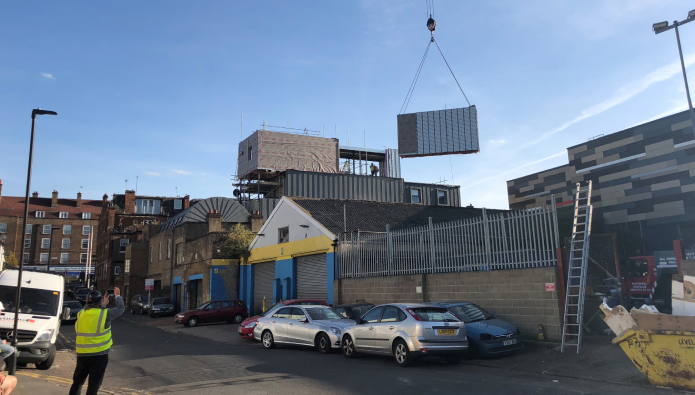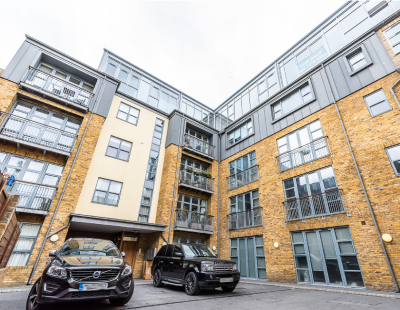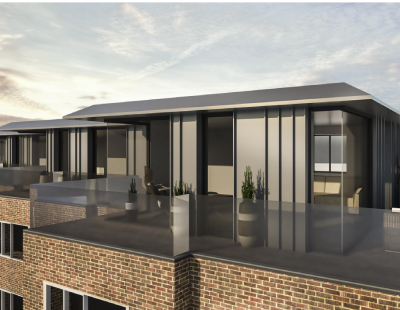Since the government announced the new Permitted Development Right (PDR), Click Above – a leading name in the emerging airspace development sector - has experienced a three-fold increase in enquiries relating to erecting new homes on top of existing buildings.
Whilst a leader in this sector for over five years, Click believes that this level of interest demonstrates a true ‘Coming of Age’ for this innovative approach to housing supply.
Here, in this Q&A with Laith Mubarak - Click Above’s acquisitions director who leads the firm’s rooftop acquisition strategy – we explore why the changes will make it easier to build upwards, what is meant by airspace development and how the sector might be affected by Covid-19.
How does the recent PDR change make building upwards easier?
The new PDR is a shift in planning culture where local authorities may now be more accepting of innovative solutions to delivering homes, such as airspace development.
The permitted development includes the construction of up to two additional storeys of flats immediately above the existing topmost residential storey on a building which is an existing purpose-built, detached block of flats.
This is subject to a prior approval process, details of which need to comply with the regulations. It is essentially an ‘in-principle’ agreement that we can build up.”
Why should developers and investors be encouraged to build upwards?
Quite simply, land for development is scarce and there continues to be a shortage of homes to meet current and future demand. Building upwards is an innovative use of unused space to address this need.
Every airspace development project that we work on is centred on exemplary design, often also delivering much-needed building upgrades and improvements.
This, combined with a focus on delivering improved asset value for the property owner, ensures that we only ever complete projects that enhance rather than blight their local environment.
Tell us more about airspace development - what do you mean by it?
Airspace, or rooftop, development is the delivery of new homes above existing buildings, utilising off-site construction methodology to minimise the impact to existing occupants. It is an efficient and alternative solution to the housing crisis. Airspace or rooftop developments can usually be found in dense cities or town centres where land is scarce.

The coronavirus pandemic has led to a massive spike in demand for more space and garden provision - how does that tally with homes higher up in the sky?
Whilst the supply of homes remains low, demand remains high. That hasn’t changed throughout the pandemic.
The benefit with our homes is that by virtue of being the top floor of the building, integrating outdoor space in the form of a balcony or terrace with impressive views remains possible.
We’re also mindful of where we develop, and our next rooftop development will be located opposite Southwark Park.
How easy is it to build new homes on the top of existing buildings? Is it more complex and costly than building new homes elsewhere?
Airspace development comes with a myriad of logistical hurdles, not least of all the preparation of the existing roof; structural surveys and the physical crane lift that is required to safely install the new modular units.
It is, however, generally a much quicker and less disruptive means of housing delivery given the significant percentage of work that is carried out off-site.
Our years of hands-on experience and investment in research and development, however, means that we’re well-versed in all these factors as well as many others that are inherent in such developments.
Is this innovative mode of housing supply one solution to solving the decades-long housing crisis?
In a word, yes! Airspace development IS an entirely feasible alternative solution to the housing crisis, particularly in town and city centres where land is scarce.
Rooftop development makes use of airspace above buildings - something which has not traditionally been considered.
Won't allowing people to build upwards without planning permission set a dangerous precedent, leading to more neighbourly disputes and NIMBYism?
The upcoming PDR comes with a prior approval process that requires a significant level of detail, not least of all around the technical elements of the project.
These approvals are essentially no different to if we were submitting a standard planning permission. All it does is give an ‘in principle’ agreement that we can build up as long as we meet the guidelines and technical elements.
All developments are met with some level of NIMBYism irrespective of what, where and how you build. What we pride ourselves on, however, is the diligence of our consultation with residents throughout the planning process and beyond.
This, along with our experience, only serves to allay concerns of those who may be impacted by the development.
Tell us more about Click Above and how it can help investors?
Click Above works with freeholders and building owners to maximise the value of their asset, by delivering new homes above their existing buildings.
We manage the whole process from design and planning to construction and delivery. This creates value for freeholders whilst minimising their financial risk.










.png)










Join the conversation
Be the first to comment (please use the comment box below)
Please login to comment